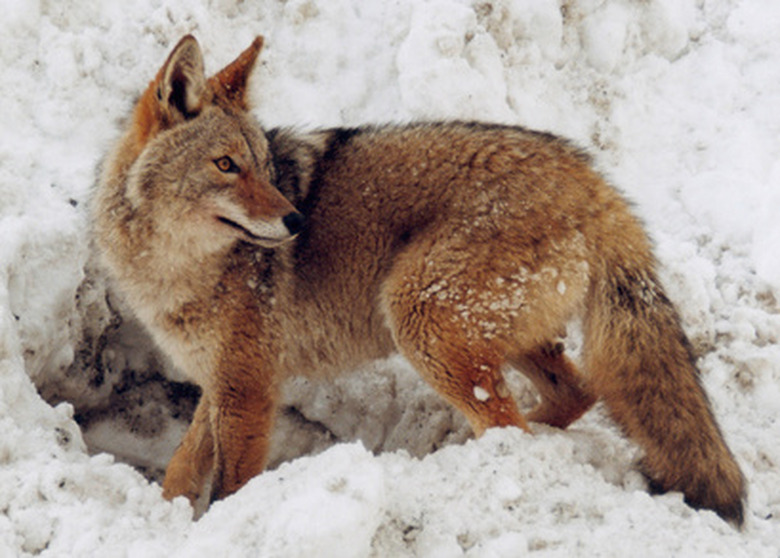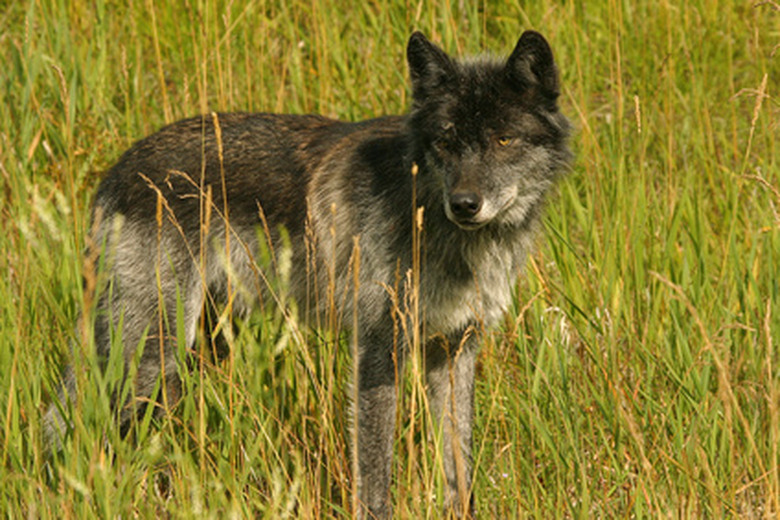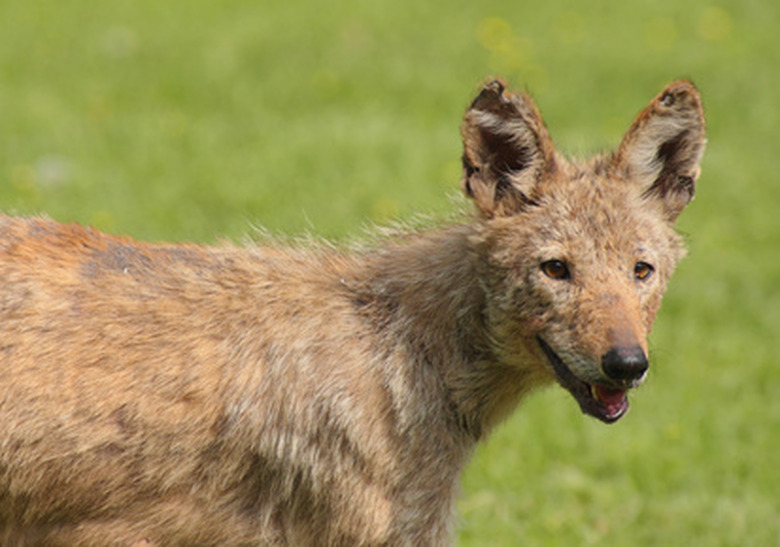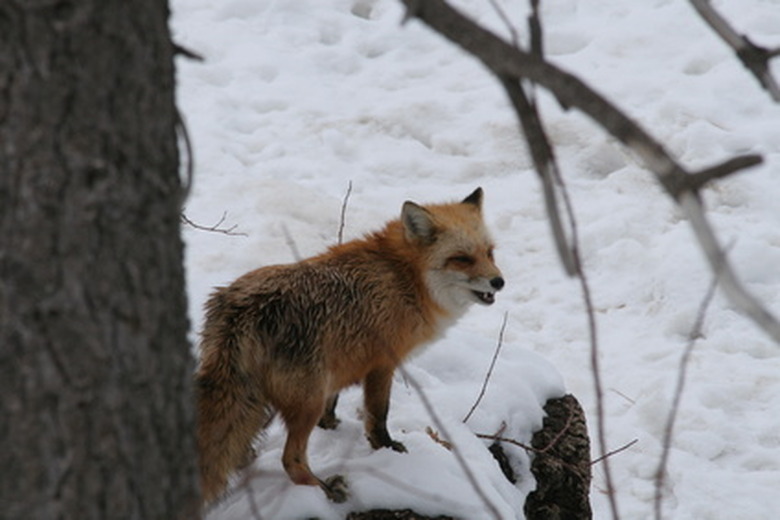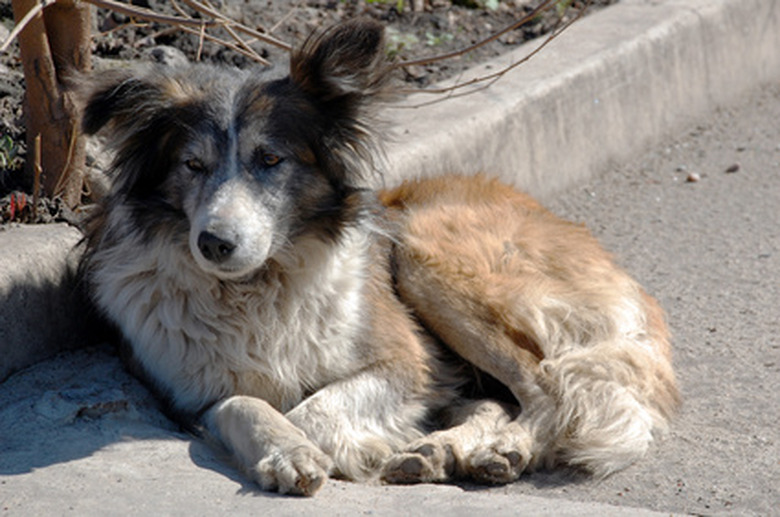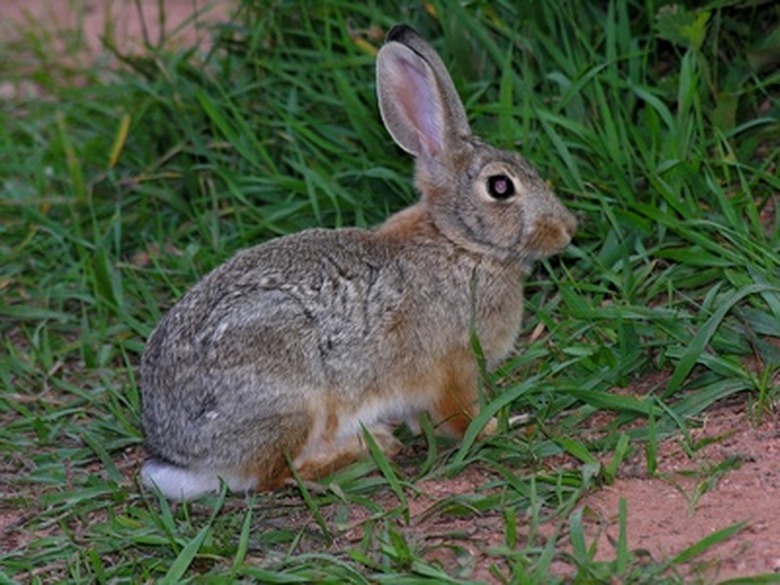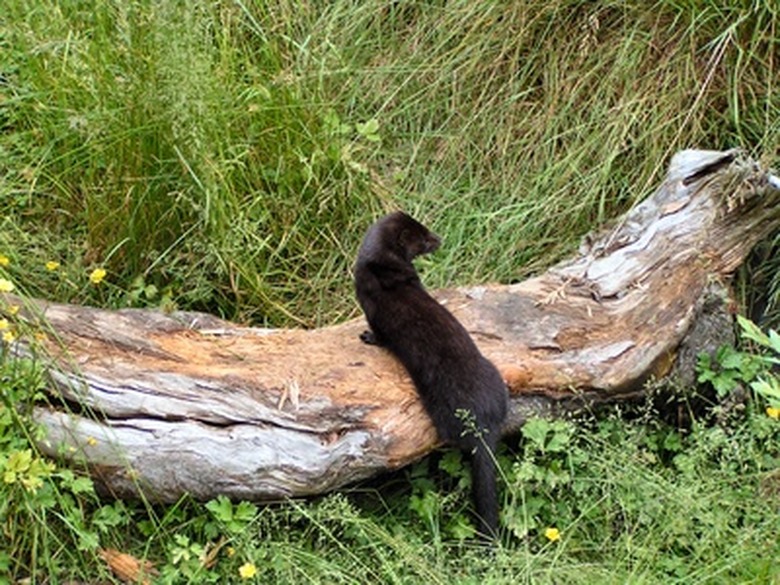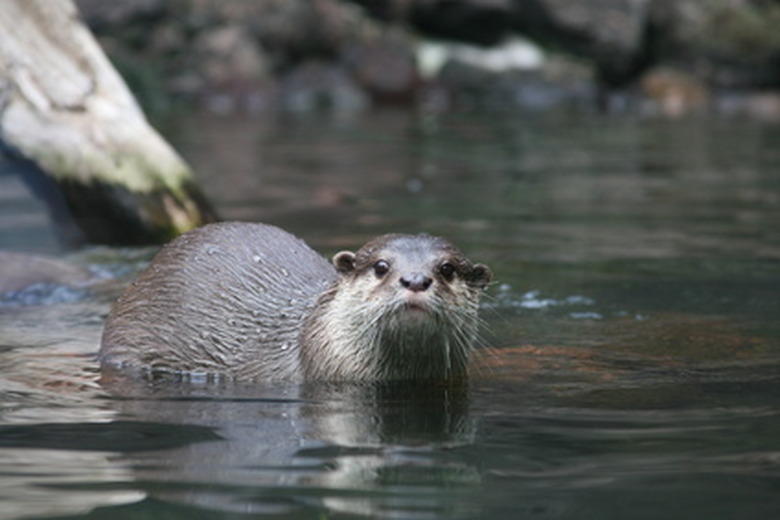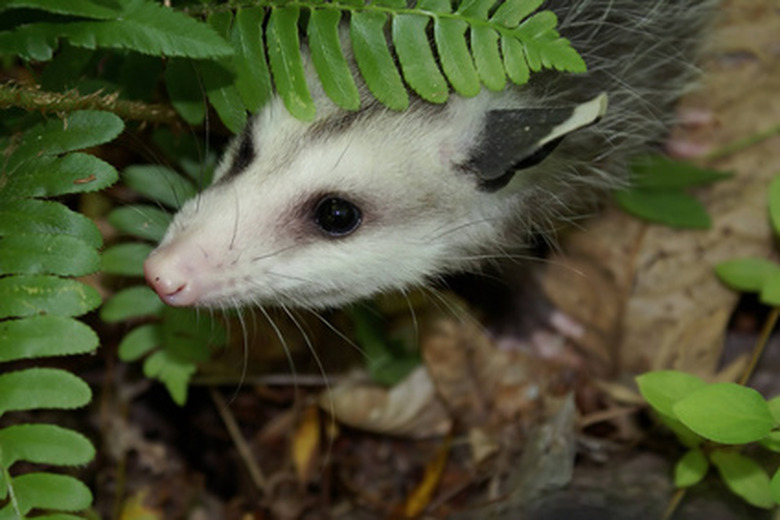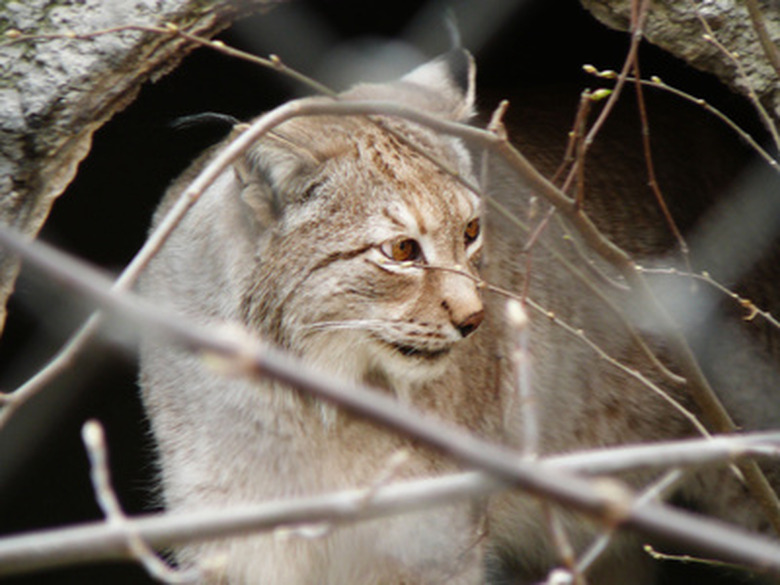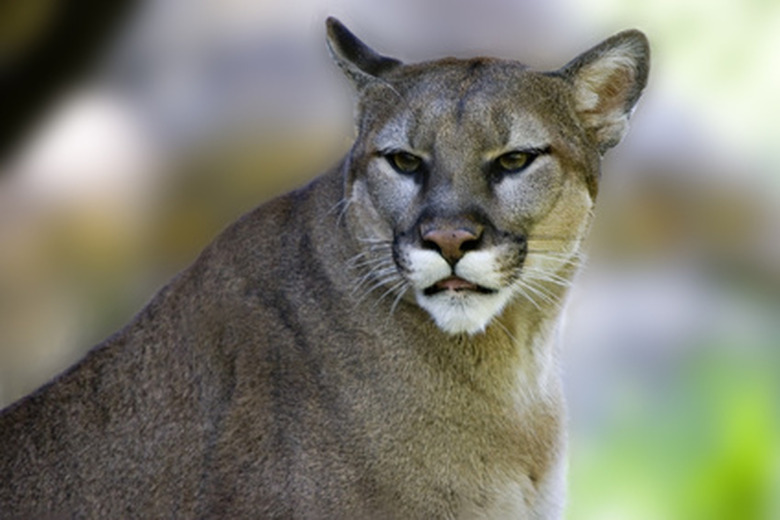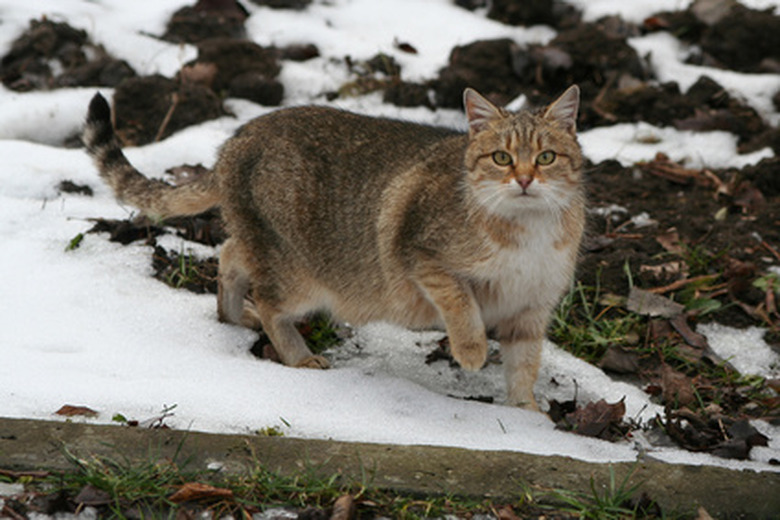How To Identify Wild Animal Paw Prints
Knowing how to identify paw prints, whether that's coyote paws or bobcat tracks, can help you identify the mammals that live in your area. Paw prints — which usually take the form of an impression in snow, mud or sand, or as a wet print on a surface — are usually the most telling way to determine what mammals are present, since most are nocturnal and are not likely to be seen during the day.
Learning basic tips and tricks can make paw print identification easy, even without an illustrated guide. Knowing how to identify mammal prints may reveal information about their activities, as well.
Canid Prints
Step 1
Measure the size and depth of the print to determine if it was made by a wolf. Wolf tracks, the largest of all canid tracks, are 4 1/4 to 4 3/4 inches long, and usually leave a deeper impression that that of a dog due to wolf's greater mass. A wolf track shows four toes on each foot; a claw mark at the end of each toe should also present.
Wolves are pack animals; wolf trails may be found together. You are not likely to see wolf tracks in the city; even in areas where wolves reside, sighting wolf tracks is a relatively rare occurrence.
Step 2
If the print is smaller than three inches wide, it could have been made from coyote paws. Coyote tracks leave the second-largest canine paw print, only second to that of the wolf. Coyote paws average 2 1/2 inches long. Like all canids, coyotes have four toes on each paw. Claw marks are usually also present.
The rear prints are usually smaller than the front prints. The two outer toes in coyote tracks are usually larger than the inner two. Unlike the wolf, coyote tracks and prints can be found in both rural and urban areas, as many coyotes reside close to or among human neighborhoods.
They can even be found roaming in large cities like Chicago and New York.
Step 3
Take a look at the shape and check for hairs to determine if the print was left by a fox. The fox leaves the smallest print of all wild canids; like its canine relatives, the fox print shows four toes with claws. The number of toes on fox prints can be harder to distinguish from prints of its relatives, since the fox's foot is covered in fur. Fox prints can be even harder to distinguish in winter due to their thicker winter coat.
It is not common to find a few stray hairs in an impressed fox print. The fox print usually has a deeper impression than that of a coyote because of the fox paw's unique flat shape towards the bottom. The toes are usually more spread out, giving the track an opened appearance. A trotting fox's stride is usually 14 to 16 inches; tracks are usually made in straight lines with front prints directly in front of the rear ones.
Step 4
Examining the heel print closely to determine if the print was made by a dog. All dogs have four toes with claws usually present. The hind paw is usually more oval shaped than the front paw; the very center of the dog print tends to leave a deeper impression than those made by foxes or coyotes, since most domestic dogs tend to have callous-like bulges on their heel pads that wild canids lack.
Note the presence or absence of bones and fur in scat, if it can be found; domestic dog scat tends to lack these constituents which are usually found in the scat of wild canids.
Small Mammals
Step 1
A rabbit print can be distinguished by the unique, elongated shape of the hind feet.
Rabbits have four toes on each foot, but are not usually easy to distinguish because of the fur between them. Front paws are typically less than 1 inch wide and 1 inch long; rear paws are between 2 1/2 and 3 inches long and are about 1 1/2 inches wide.
Rear paw prints are usually appear in front of the front paw prints, giving rabbit tracks a unique appearance that makes it easy to distinguish them from most other mammals.
Step 2
Use size and habitat clues to determine if the print was made by a mink. Mink tracks are often found by water, especially along the edges of streams and rivers. Minks have five toes per foot; front prints often show only four.
Minks have claws, but they are not usually present in the print. The five toes are asymmetrical; the inner toe of the print is usually set further back, looking a bit like a thumb. Both front and hind tracks are about 1 1/4 inches long.
Step 3
Count the toes and measure the print to determine if it was made by an otter. An otter's print is wider than it is long; front prints will are usually 2 1/2 to 3 inches wide, with hind prints about an inch larger. Unlike on the mink, the otter's five toes are arranged symmetrically.
Each toe is shaped like a teardrop, with the points facing forward. Claws are usually visible, as is webbing between the toes.
Step 4
The Opossum — North America's only marsupial — leaves a very distinct track which can be distinguished by the presence of opposable thumbs on the hind paws which help them climb. Front paws have five elongated toes arranged in a way that resembles an open hand.
Hind paws have the same, but feature an opposable thumb digit set way in the back. Prints are usually 1 1/2 inches long and 2 inches wide; hind paws are 2 inches long and 2 inches wide. They can be found in urban and rural areas.
Step 5
Look at the shape and size to determine if a print was made by a skunk. Like opossums, skunks also have five toes per foot, but lack the opposable thumb of opossums. Skunk prints are distinguished by evidence of claws, which help skunks to dig for grubs and roots; claws are usually more prominent on the front paws than the hind.
Front paws will usually measure 1 1/2 to 2 inches, and are wide and round; with rear paws being one inch larger, and are elongated, resembling a footprint left by a human shoe.
Large Feline Prints
Step 1
Count the toes and take note of the presence or absence of claws to determine if the print is a part of bobcat tracks. Bobcat tracks show four toes both front and hind feet. Cat prints rarely show claws; this is because cats keep them retracted.
Front and rear paws are about 2 1/2 to 3 inches in length. Cat prints are very similar to coyote prints except for the addition of a third lobe on the heel pad on felines and the lack of claw impressions.
Step 2
Cougars — sometimes called mountain lions — leave the largest prints of all North American felines. Cougar tracks show four toes on each foot; retractable claws do not show.
Cougar tracks can be over four inches long. Since they walk very carefully, especially while stalking prey, front and rear tracks tend to overlap. Unlike dog prints, cougar prints are asymmetrical; toes appear to be leaning to one side.
Step 3
Feral cats leave the smallest of all feline prints and measure about 1 inch wide each. Each print shows four toes per foot; the feline heel pad has three lobes as opposed to two, distinguishing it from small canines. Toes lean to one side. Claws do not show.
Things Needed
- Animal tracks
- Field guide to mammal tracks
- Ruler
TL;DR (Too Long; Didn't Read)
Sketch prints in a nature journal, or take a picture, if you do not have a field guide on hand.
Warning
Do not disturb animals in the wild; doing so may cause them to become aggressive, abandon young, or even die.
Cite This Article
MLA
Cole, Simone. "How To Identify Wild Animal Paw Prints" sciencing.com, https://www.sciencing.com/indentify-wild-animal-paw-prints-7716849/. 22 November 2019.
APA
Cole, Simone. (2019, November 22). How To Identify Wild Animal Paw Prints. sciencing.com. Retrieved from https://www.sciencing.com/indentify-wild-animal-paw-prints-7716849/
Chicago
Cole, Simone. How To Identify Wild Animal Paw Prints last modified March 24, 2022. https://www.sciencing.com/indentify-wild-animal-paw-prints-7716849/
